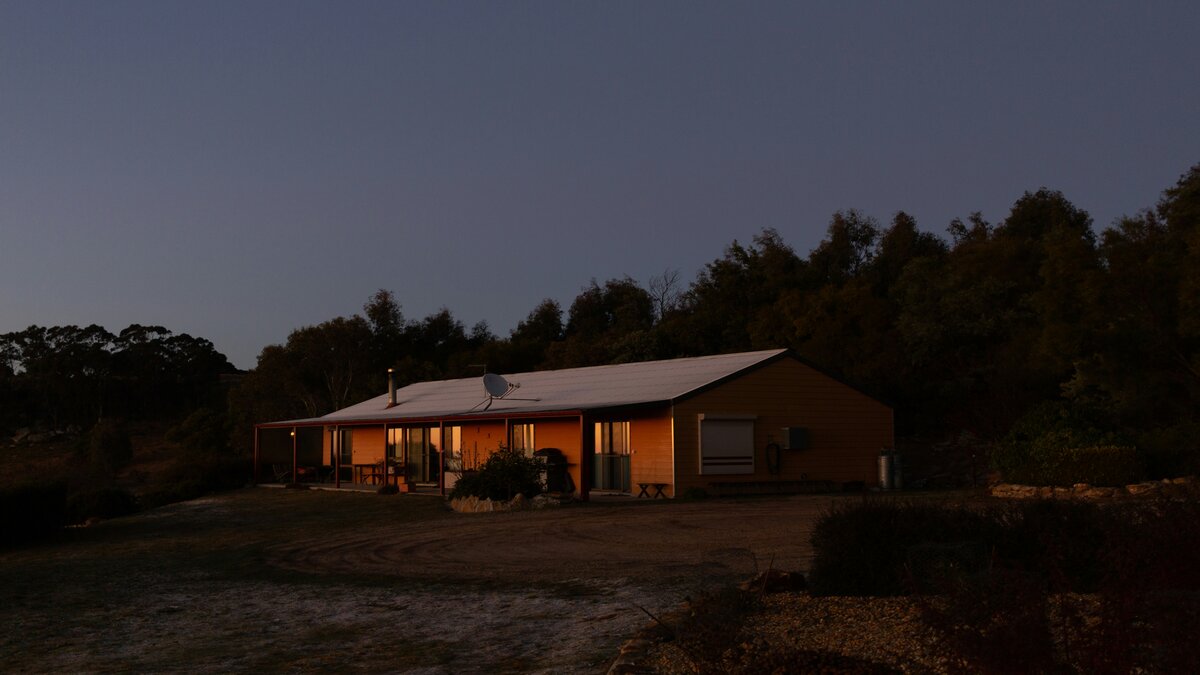How to buy an overseas property from Australia
Some property investors look beyond Australia’s borders to expand their property portfolio. Here’s what to know if you’re considering buying overseas.
Many buyer’s agents advise not restricting yourself to properties around where you live. Instead, they encourage investors to explore investment opportunities all over Australia.
That line of thinking might beg the question: why stop there?
There’s a big wide world out there with presumably plenty of opportunities for savvy buyers, but taking advantage of overseas investment options can be a more complicated process than buying property domestically.

Buying property overseas
As you’d probably expect, there are a few extra steps to take when the property you’re trying to buy is in a different country.
Here are just a few factors that might be worth thinking about if you’re considering embarking on an international property investment journey.
Local laws
If you’ve got a particular country in mind, you’ll need to check whether you’re actually allowed to buy property there.
In Iceland, for instance, you can only buy property if you’re a citizen of a European Economic Area country or a resident (unless you have special permission), while Canada recently extended a blanket ban on foreign investors. On the other hand, the USA and UK place few restrictions on foreigners buying property.
Some nations also have general restrictions on what landlords can and cannot do in the management of an investment property. Caps on rent increases are common in Europe for example, and many countries place limits on no-fault evictions.
You’ll want to get familiar with the tenancy laws in your country of choice before pulling the trigger.
Finance
Australian lenders generally won’t accept a non-Australian property as security for a home loan. That’s largely because it’s much more difficult to repossess a property located in a different country.
Nevertheless, there are still a few options international investors might be able to take advantage of when it comes to financing an overseas purchase:
- Equity in existing property
If you already own an Australian property, you might be able to borrow against your equity in order to purchase an overseas investment. Home equity loans are secured against an existing property and can circumvent the fact that Australian lenders typically don’t provide mortgages for the purchase of an overseas property. These loans tend to capped at 80% of your total equity. - International banks
Another option worth exploring could be international lenders – some banks and lenders may operate both in Australia and the country you’re investing in. HSBC, for example, lends to 62 different countries, including Australia, so may allow you to borrow against an international property. - Domestic banks
Finally, you may simply be able to get a loan from a bank that operates in the country you are investing in. Depending on the bank and an individual country’s laws, there may be restrictions that apply to foreign borrowers. In some nations, non-residents need to put up a higher portion of a property’s value as a deposit, for example.
Tax
While you may be legally allowed to buy property in a certain country, you’ll also need to check that country’s tax code to see what your taxation obligations will be once you’ve purchased.
Meanwhile, if you’re residing back in Australia, you need to pay income tax if you’re turning a profit on rental income realised overseas. On the other hand, if you’re making an annual loss on your investment, negative gearing may still apply, so holding a loss-making overseas investment property might allow you to reduce your taxable Australian income. You’ll also need to pay capital gains tax in Australia if you make a profit on the sale of an overseas property.
Where to invest?
When considering investing outside of Australia, some people will already have a specific country in mind.
For example, migrants might want to buy property in their nation of origin, and those purchasing a holiday home might have a specific destination in mind.
But, if you’re still exploring your options, here are some of the most common international investment options for Australians.
Asia and Oceania
New Zealand
For many Aussies, the most straightforward country to invest in is New Zealand.
While the Kiwis do have general restrictions on foreigners buying property, there are exceptions for Australian citizens. Trans-Tasman arrangements mean that in many instances, Aussies have the same rights as New Zealand citizens when it comes to buying residential property or vacant land for development.
Per Cotality, the national median property price in New Zealand was NZD$927,284 as of June 2025 (approximately $856,960, at the time of writing) – above the Australian average ($831,288).
Additionally, New Zealand property values appear to be on the way up. Cotality NZ Chief Property Economist Kelvin Davidson says buyers are being encouraged by easing interest rates in the nation.
“While the market downturn appears to be behind us, the recovery in 2025 is far from uniform,” he said.
“Detached houses, particularly in smaller and more affordable suburbs, seem to be where the early recovery is taking hold.”
Elsewhere
Foreigners are also allowed to own property in Japan, where interest rates are typically lower than the rest of the developed world.
South Korea and Singapore are other Asian nations that permit foreigners to own property.
However, you’ll have less luck in places like China, Thailand, or Vietnam.
If you have lived on a resident permit in China for at least one year, you might be able to buy a residence there. Though, foreigners are not allowed to rent out Chinese property.
Europe
United Kingdom
In the United Kingdom, there are no restrictions on foreigners buying property.
However, the UK currently has higher average mortgage rates than Australia does, with the nation’s Bank Rate sitting at 4.25% as of June 2025.
UK landlords also face relatively tight restrictions. They must provide a minimum of six months’ notice for no-fault evictions and have to limit rent increases to once per year.
European Union
The cash rate in the European Union is a comparatively lower, at 2% as of June 2025, which might make countries like France or Germany look attractive.
At the same time, French landlords are not only restricted to increasing rent just once per year, they also cannot increase rent by more than 3.5%, so how much cash flow a foreign investors’ rental property can generate will be limited.
In Germany, where more than half the population rents, the government announced a three-year freeze on rent increases, starting in August 2023.
There are about 5.2 million foreign property investors in Italy. Though, rent increases there are capped at 75% of the annual inflation index (similar to how the ACT does things).
North America
Lloyd Edge, founder and managing director of buyers agency Aus Property Professionals, says there are often enticing investment opportunities in the USA.
“[The USA] is an interesting one because people generally buy apartment buildings over there,” he told Your Mortgage in 2024.
“[In Australia] you’d buy individual apartments, but for similar money over in the States in various areas you’d buy the whole building essentially.”
There are also very few restrictions on overseas property investors stateside, unlike in neighbouring Canada where investing in property isn’t an option for Aussies at the moment.
If you’re looking for a bargain, Mexico is another popular destination, particularly for development. But, while there may be notable growth opportunities in Mexico, interest rates on home loans there are often higher.
Elsewhere
If you’re a more speculative investor, you might be drawn to property markets in developing countries.
A quick browse on realestate.com in areas like Africa or Southeast Asia will yield an abundance of properties available for a small fraction of the price equivalent homes in Australia would sell for.
However, Mr Edge cautions buyers tempted by cheap and affordable properties overseas that a low price does not always make a great deal.
“You look at a property for $40,000 … it would cost ten times that much to buy a cheap property in Australia … you think, ‘oh this is great,’ but is it really that great?” he said.
“Maybe that property will always be worth $40,000, or [its value] will go down because property may not have that value in some countries … value [comes from] what people will pay for it.
“You really need to do your research and understand what’s happening in that country … looking at how stable the economy is, how stable the government is, and things like that.”
If you’re looking to pursue one of these high risk, high reward investments, financing might be easier if you pick a nation that an international bank like HSBC operates in. Brazil, Egypt, India, Indonesia, South Africa, the Philippines, and Sri Lanka are a few examples.
What is the Global House Price Index?
The Global House Price Index is created by global property market analyst Knight Frank. It tracks movements in more than 50 housing markets across the globe.
Tracking house prices in various countries is notoriously tricky without an insider’s knowledge. For instance, on paper, house prices in Turkey appear to have soared 29% in the year to 2024’s fourth quarter. However, when accounting for the 44% annual inflation rate realised over the same period, Turkish property values actually fell by 10% in that time.
Thankfully, the Global House Price Index also measures the ‘real’ change in property prices. Here’s how they stood over 2024, counting the 12 months to the December quarter:
| Country | Year-on-year change | Real year-on-year change |
|---|---|---|
| Turkey | 29.4% | -10.4% |
| Bulgaria | 16.5% | 15.2% |
| Poland | 14.4% | 8.9% |
| Portugal | 13.7% | 10.4% |
| Croatia | 12.3% | 10.5% |
| Hungary | 12.3% | 9% |
| Netherlands | 10.9% | 6.6% |
| North Macedonia | 10.6% | 9.7% |
| Taiwan | 10.4% | 8.2% |
| Colombia | 9.1% | 3.7% |
| Ireland | 8.8% | 7.3% |
| Mexico | 8.7% | 4.4% |
| Iceland | 8.7% | 3.8% |
| Slovenia | 7.9% | 7.2% |
| Brazil | 7.7% | 2.8% |
| Israel | 7.7% | 4.4% |
| Spain | 7% | 4.1% |
| Japan | 7% | 4.3% |
| Lithuania | 7% | 4.8% |
| Malta | 6.9% | 2.8% |
| India | 6.9% | 2.8% |
| Slovakia | 6.7% | 3.8% |
| Greece | 6.6% | 3.9% |
| Sweden | 6.5% | 5.6% |
| Estonia | 6.4% | 3.3% |
| Czech Republic | 6.1% | 3.4% |
| Australia | 5.7% | 3.2% |
| Latvia | 5.4% | 3.9% |
| Norway | 4.8% | 2.6% |
| Singapore | 4.7% | 3.2% |
| United Kingdom | 4.7% | 2% |
| Italy | 4.5% | 3.2% |
| United States | 3.9% | 1% |
| Romania | 3.9% | 4.2% |
| Canada | 3.6% | 1.8% |
| Belgium | 3.6% | 0.5% |
| Denmark | 2.3% | 1% |
| Indonesia | 1.4% | -0.2% |
| Malaysia | 1.4% | -0.3% |
| South Korea | 1.4% | -0.6% |
| Germany | 1.2% | -1.4% |
| South Africa | 1.1% | -1.7% |
| Cyprus | 1% | -1.6% |
| Switzerland | 0.9% | 0.2% |
| New Zealand | -0.1% | -2.3% |
| Austria | -1.1% | -3% |
| Luxembourg | -0.1% | -0.2% |
| France | -1.6% | -2.9% |
| Peru | -2.2% | -4.1% |
| Chile | -4% | -8.2% |
| Jersey | -5% | -7.3% |
| Ukraine | -5.5% | -15.6% |
| Finland | -5.5% | -6.3% |
| Hong Kong SAR | -8.2% | -9.5% |
| Mainland China | -8.6% | -8.9% |
Source: Knight Frank Research, Q4 2024
Benefits to buying property from outside Australia
Spread exposure
International investing can be a good opportunity for those who already own Australian property to diversify their portfolio.
While property is generally viewed as a safer investment class, it is never risk free.
There is always a possibility that the Australian market could take a hit, so adding property from elsewhere to your portfolio can help spread your exposure, diversify your holdings, and feasibly reduce risk.
Invest in developing markets
Australia is one of the most advanced economies in the world, so it follows that its property market is among the world’s most expensive.
Even in other developed nations, like the USA, there are areas where property is available at a heavy discount.
However, this is normally because of lower demand, so buyers should be aware that investing in affordable international property is usually more speculative.
As is the case with most investments, a higher ceiling for returns tends to mean taking on greater risk.
Drawbacks to overseas property investing
Property management issues
Managing a property from another country can bring quite a few challenges.
For instance, addressing maintenance issues becomes a lot harder from thousands of kilometers away, and could be twice as difficult if you don’t share a language with a property manager or tradesperson.
Enlisting a local property manager can help mitigate some of these issues, but even managing this relationship could be challenging due to things like language differences and time zone variances.
Legal complexity
The laws and regulations regarding investing in your nation of choice might be very different to those in Australia.
Would-be investors need to take the time to learn a whole new set of property laws, including ownership rights, tenancy regulations, and zoning laws for developers, before making the leap to purchase a dwelling.
Political instability
While Australia’s standing as one of the world’s most advanced economies means property can be more expensive here, Australia is also one of the world’s most politically stable nations.
Negative shocks that can harm property values, such as war, are less likely to befall Australia compared to many other parts of the world, especially more traditionally volatile regions like Africa or the Middle East.
Tips for Australians buying property overseas
Do your research
It’s important to do your research before investing in anything, but research becomes even more vital if you’re investing somewhere you are unfamiliar with.
You should make sure you have a good understanding of the laws, the property market fundamentals, and general stability of a nation in question before you consider buying housing there.
Check the property out
One of the most common reasons people choose to invest in property close to where they live is that doing so often means they’re able to visit the property, whether for maintenance or for inspections.
If an investment property is located on the other side of the world, such visits are less feasible but no less important.
Ideally, Mr Edge says you or a representative of yours should check a property out in person before you buy it.
“Buying sight unseen, or even buying and then deciding to go and have a look, when you’re on the other side of the world can be fraught with danger,” he said.
Engage locals
Mr Edge recommends consulting a local buyer’s agent before any overseas investment.
“You need to really understand what you’re doing and maybe have someone on the ground over there who can assist you with that,” he said.
“[Buyers] should do their own research and then engage a buyer’s agent.”
A buyer’s agent should be familiar with the local market as well as local laws and regulations, and might be able to offer extra insight into where to buy property and the long term investment prospects of doing so.
Image by Tim Alex on Unsplash
Collections:
What is the Help to Buy scheme?
Updated on 24 Jun 2025
A fresh Federal Government initiative to help more Aussies into homeownership should kick off in 2025.ON THIS PAGEWhat is the Help to Buy Scheme?How much could you save using Help to Buy?Help to Buy Scheme by State

Help to Buy is a scheme intended to make it easier for low- to middle-income households to buy property. Legislation allowing the scheme passed the Federal Parliament in November 2024.
All going to plan, Aussies should be able to start applying in 2025. The scheme was initially expected to be up and running in 2024.
Help to Buy goes further than initiatives like the Home Guarantee Scheme (HGS), where the Federal Government essentially goes guarantor for a certain percentage of eligible buyers’ home loans – up to 18%.
Under Help to Buy, the Government will actually make a potentially substantial contribution towards a buyer’s property purchase and hold ownership over an equivalent portion of their home.
Former Minister for Housing Julie Collins said Help to Buy could save mortgage holders hundreds of dollars each month.
“It won’t just be a leg up into home ownership with savings from a smaller deposit – it will provide long‑term relief to Australians who are part of the scheme,” Ms Collins said.
Like the HGS, Help to Buy will be administered by the independent national housing authority, Housing Australia.
What is the Help to Buy Scheme?
Help to Buy will see the Government making a contribution of up to 40% of the purchase price for eligible home buyers. It isn’t exactly a hand out – you will be expected to pay this back over time or hand over an equivalent portion of any proceeds when you sell.
That means, if the Government contributes 40% of the money needed to buy a property, the home owner will need to hand over 40% of the property value when and if they sell, even if the property’s value has risen or fallen in the time they’ve owned it.
In the meantime, you won’t be charged rent or interest on the Government’s stake.
Who is eligible
As it stands, to be eligible for Help to Buy assistance, applicants must meet the following conditions:
- Be an Australian citizen over 18 years old
- Satisfy income tests (maximum $100,000 annually for individuals, $160,000 for couples)
The Albanese Government previously confirmed to Infochoice Group these caps will be adjusted with the Wage Price Index, meaning they should rise alongside wages more broadly over time. - Property must not exceed value cap for its area
- Must live in the property
- Must not be receiving other assistance (the FHG for example)
Those also making the most of state-based first home owner grants will be able to turn to the scheme. - Must be able to satisfy other costs of buying like stamp duty, bank fees, etc
- Must not already hold a ‘disqualifying interest’ in Australian property
As it stands, there could be some exceptions to this requirement for single parents.
How much will the Government contribute?
The Government’s maximum equity contribution will be 30% of the purchase price for an existing property and 40% of the purchase price of a new build. It’s minimum equity contribution will be 5%.
You’ll need to have a deposit of at least 2% to use the scheme, and the combined Commonwealth contribution plus your deposit needs to be at least 20% so to ensure you avoid paying for lenders mortgage insurance (LMI).
The stake the Government has in your property will remain unchanged even if the property’s value changes.
For example, lets say you buy a property worth $500,000 with the help of a $100,000 boost from help to buy. That means the Government would have a 20% stake.
And let’s assume that, when the time comes to sell, your property’s value has gone way up and is now $750,000.
If you hadn’t previously bought out any of the Government’s equity, it’s 20% stake would have increased to $150,000 and you’d have to hand those funds over.
This works in both directions though. Had the property’s value dropped to $400,000, the Government’s stake would be worth just $80,000.
As mentioned previously, a buyer using the scheme can buy back some or all of the Government’s stake when and if they’re able to.
How it will work
The Government is planning to offer 40,000 places in the scheme over four years, so 10,000 places each year. These places will be distributed between states depending on population (more on this later).
Repaying the Government will depend on the capacity of the borrower to do so. Participants will be required to be assessed by their lender periodically to see if they’re in a position to repay the Government, either in full or partially (repaying a minimum of 5% at a time).
As it stands, the legislation gives Housing Australia flexibility in how it will determine whether or not participants are required to start buying the Government out.
There will also be periodic reviews into whether the income of the borrower/s has passed the set thresholds, which could trigger a requirement for repayment. If this were to occur, the borrower would likely be asked to return to their lender to work out if they could take on more debt in order to buy some or all of the Government’s stake in the property.
How to apply for Help to Buy
There’s no way to apply for Help to Buy at the moment, since it hasn’t yet been confirmed that it will go ahead. However, applications will likely be made through Housing Australia.
How much could you save using Help to Buy?
The potential savings from the Help to Buy scheme will vary widely depending on the property value, the size of the Government contribution, and future home loan interest rates.
As an illustration, let’s imagine you’re buying a property for $600,000 and you’ve got a 5% deposit, which amounts to $30,000.
Getting a home loan without Help to Buy
Without assistance from Help to Buy, you would likely end up with a $570,000 home loan.
The most recent RBA data has the average variable rate for new loans at 6% p.a, which means (assuming a 30 year loan term) you’d face monthly repayments of $3,417, as per Your Mortgage’s repayment calculator.
You would also likely be charged an LMI premium of about $31,000, according to Your Mortgage’s LMI calculator.
Servicing a mortgage with Help to Buy
Now lets say Housing Australia agrees the Government will make an equity contribution of 30%, or $180,000.
That could mean you only borrow $390,000. With a 30-year loan term and an interest rate of 6% p.a, your monthly repayments would be $2,338 – a saving of nearly $1,100 each month, not to mention the cost of LMI.
Help to Buy Scheme by State
Beyond the Federal Parliament, each state will need to pass its own legislation for Help to Buy to operate. Queensland was the first to do so in mid-2024, followed by Victoria and NSW in 2025. As it stands in mid-June, no such legislation has been passed in Western Australia, South Australia, or Tasmania. The territories are exempt from needing new legislation for the scheme to operate.
Assuming this all goes ahead without a hitch, the 10,000 places will be distributed between all eight states and territories evenly, relative to the population size.
There will also be different value caps for properties between regions.
As it stands, this will be the situation:
NSW
- Approximate places: 3,111
- Price cap in Sydney and regional centres: $1,300,000
- Price cap in rest of NSW: $800,000
Victoria
- Approximate places: 2,555
- Price cap in Melbourne and regional centres: $950,000
- Price cap in rest of Victoria: $650,000
Queensland
- Approximate places: 2,037
- Price cap in Brisbane and regional centres: $1,000,000
- Price cap in rest of Queensland: $700,000
Western Australia
- Approximate places: 1,074
- Price cap in Perth and regional centres: $850,000
- Price cap in rest of Western Australia: $600,000
South Australia
- Approximate places: 704
- Price cap in Adelaide and regional centres: $900,000
- Price cap in rest of South Australia: $500,000
Tasmania
- Approximate places: 222
- Price cap in Hobart and regional centres: $700,000
- Price cap in rest of Tasmania: $550,000
Northern Territory
- Approximate places: 111
- Price cap in the Northern Territory: $600,000
Australian Capital Territory
- Approximate places: 185
- Price cap in the ACT: $1,000,000
Considering buying your first home? Here are some of the most competitive home loans on the market for first home buyers right now:
| Lender | Interest Rate | Comparison Rate* | |||||||
|---|---|---|---|---|---|---|---|---|---|
| 5.34% p.a. | 5.49% p.a. | Owner OccupierFixed 3 YearsPrincipal & Interest10% Min DepositExtra Repayments | Available for purchase or refinance, min 10% deposit needed to qualify.No application, ongoing monthly or annual fees.Flexibility to split your loan with both fixed and variable rates | More details | Compare | Promoted | Disclosure | ||
| 5.34% p.a. | 7.13% p.a. | Owner OccupierFixed 3 YearsPrincipal & Interest5% Min DepositExtra Repayments | More details | Compare | |||||
| 5.39% p.a. | 5.75% p.a. | InvestorFixed 3 YearsPrincipal & Interest20% Min DepositRedrawExtra Repayments | More details | Compare |
Important Information and Comparison Rate Warning




